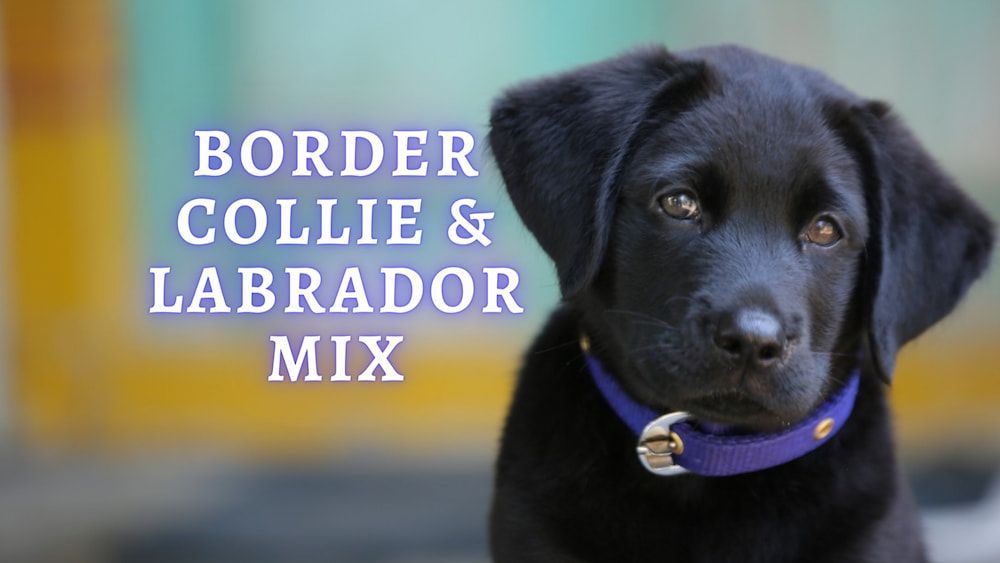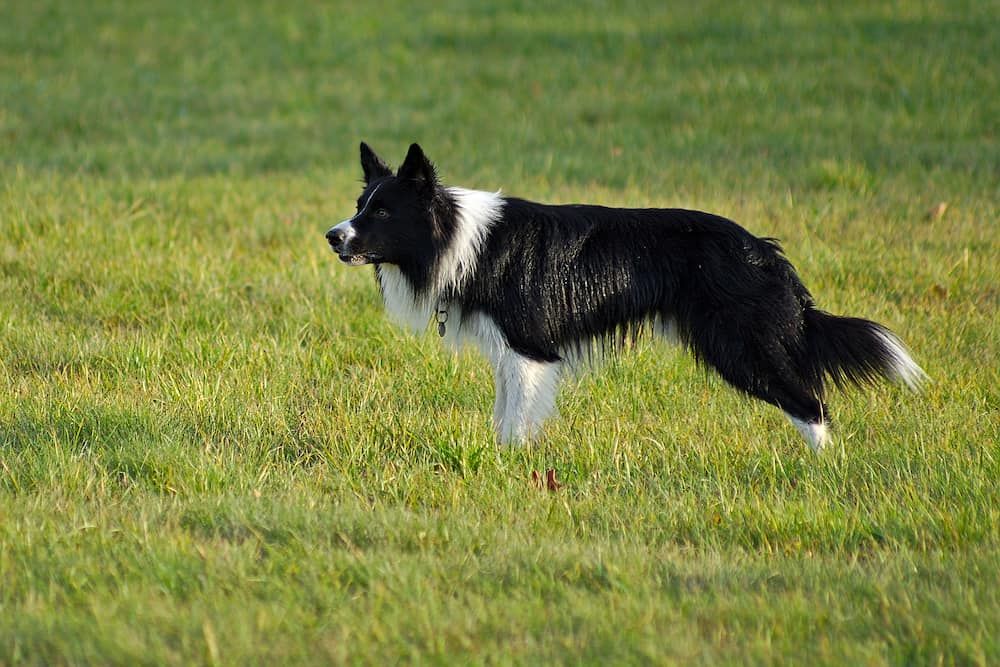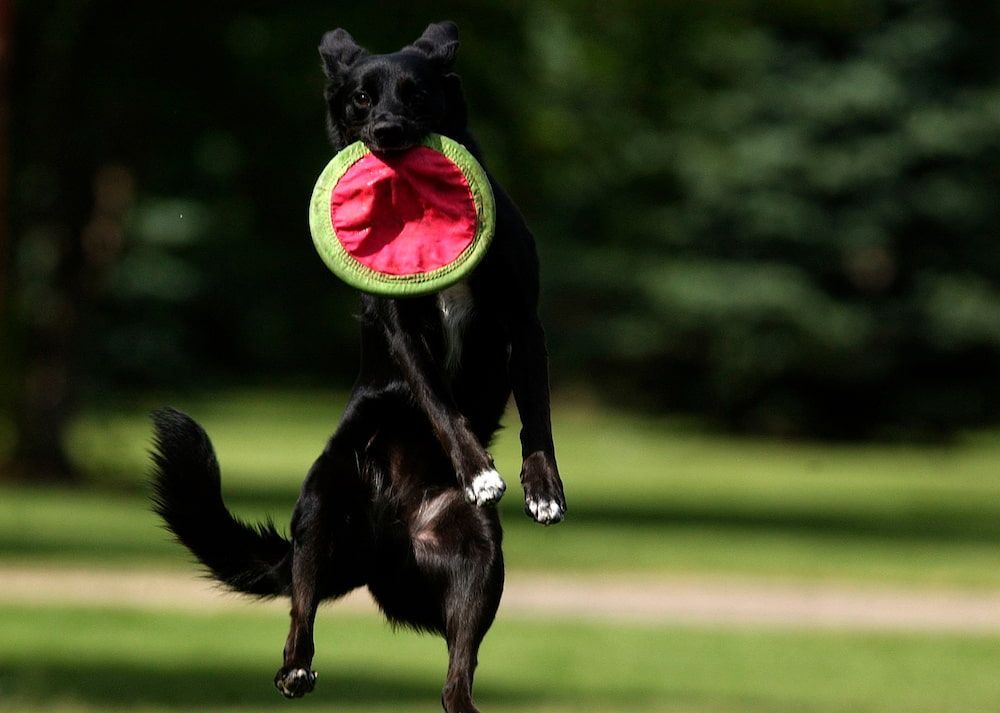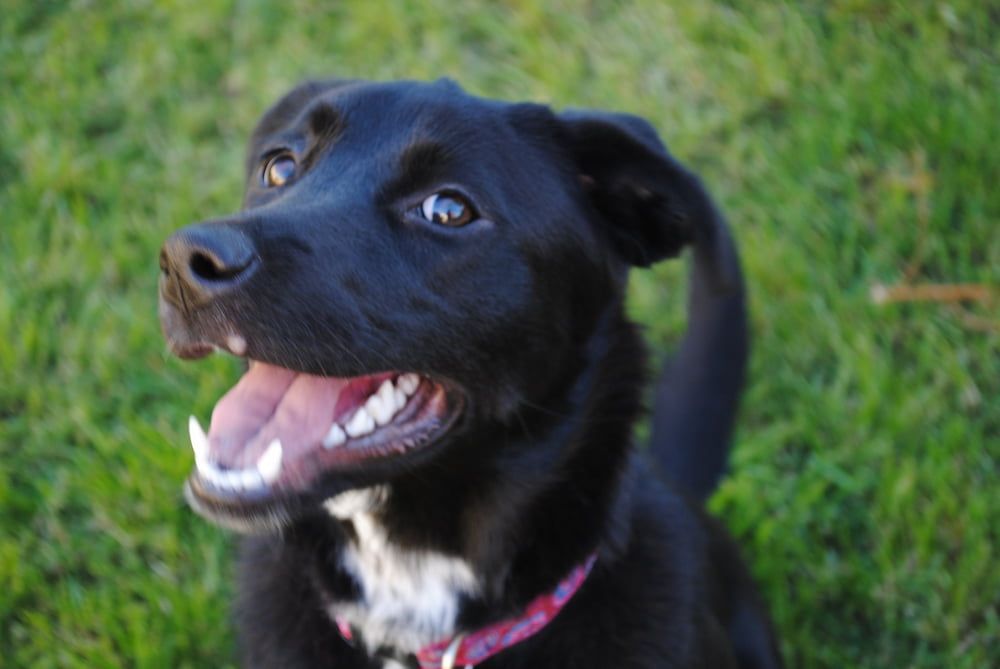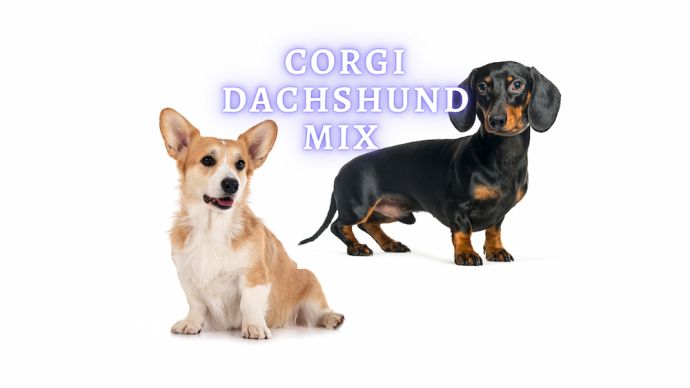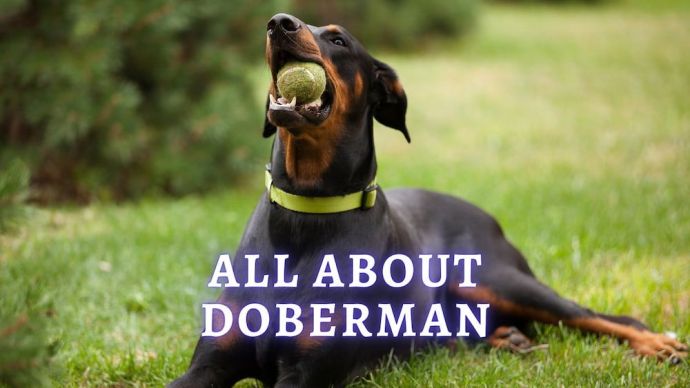Border Collie Lab Mix: Borador Dogs Personality, Care and Adoption
Written by:
Author: Seb Jenkins
Seb is a professional SEO writer with a degree in Journalism, he has five years of experience in writing and editing. Seb specializes in topics like dog and cat breeds, aquarium guides, and pet care. He is passionate about educating and entertaining animal owners worldwide. In his spare time, Seb enjoys writing fiction novels.
View all 83 articlesLearn about our editorial process and veterinary review board.
Viewed: 7232
Updated on: 06/08/2023
It comes as no surprise that if you mix two of the most lovable dog breeds on the planet, they create something quite wonderful. Border Collie Labs are, of course, born of Border Collie and Labrador parents, creating a loving, intelligent, energetic dog that is very well suited to family life. With these mixed breed dogs, you get all the child-friendly fun of a Labrador with the intelligence of a Border Collie, making a rather unique and enjoyable best friend. However, as with any breed of dog, especially cross breeds that you may not be as familiar with, it is important to do your research and learn how best to take care of them. Fortunately for you, we have created an article to explain the ins and outs of doing just that!
Characteristics
The following are the main characteristics shown by the Borador:
| Height | 18-23 inches |
| Weight | 35-60 pounds |
| Lifespan | 14-15 years |
| Coat | Short, glossy, double |
| Colors | Tan, black, brown, chocolate, red merle |
| Shedding | Little |
| Temperament | Loving, gentle, like a two-year-old child |
| Intelligence | High |
| Social skills | Very good with people, excitable with dogs |
| Destructive | Can chew on things, barking |
| Other issues | Separation anxiety |
| People skills | Loves to please |
| Children | Great with kids |
| Energy levels Lots of energy | Needs lots of exercises |
Breed History
The Border Collie Lab mix, which is actually referred to as a Borador, only came into existence over the last two decades in North America. As explained before, the Borador is created by cross-breeding a Labrador and a purebred Border Collie to get the best of both worlds in a single pup. The concept of cross-breeding is not a new one; in fact, it has been around for hundreds of years. However, a more recent trend has seen breeders create ‘designer dogs’ by mixing two purebreds together. Usually, it would take years and years to breed a new kind of registered and officially recognized dog. However, this traditional breeding is now often being replaced by purebred breeding, as we see in the mating between Border Collies and Labradors.
So, what is the history of the two parents? Labradors are one of the most popular breeds today and are famous for being loving, fun and great family pets. However, they were originally bred to retrieve escaping fish and nets for fishermen, where they get their name. That must be why they are so good at fetch! They are also helpful in the areas of hunting, bomb-sniffing, and therapy in more modern times.
On the other hand/paw, Border Collies were originally used for herding animals like sheep as they are among the smartest and hard-working dog breeds on the planet. They are still used as herding dogs to this day, as well as competitions such as agility, obedience, and tracking. So the Borador gets some of these traits from the Border Collie parent.
Interesting Facts
- They are bred using a Labrador Retriever and a Border Collie.
- They can be a little unpredictable.
- They can be used as drug sniffer dogs.
- The average litter size is between four and eight.
- They are mostly found in North America and Europe.
- They are from the Animalia kingdom, the Canis Genus and the Canidae family.
- Their scientific name is Canis Lupus Familiaris.
Temperament and Personality
The Border Collie Labrador mix is very human-like due to its fun personality and high intelligence. Some people compare the mind of a Borador to a two-year-old human child as you get the mix of the Labrador playfulness and Collie’s brains. Fortunately, this makes them fun to be around, but they are also easy to train.
Boradors require lots of exercise and tasks each day in order to keep them physically and mentally stimulated. Walking alone is not enough to satisfy a Borador, you need to offer up a varying degree of activities from them. This can include walks, but also running, search play, swimming, hiking, and more.
Both Labradors and Border Collies are pretty regular barkers, so you can be confident that your mixed breed dog Borador is going to be vocal too. They will often bark to talk with you, so if you are not looking for this kind of dog, the Borador may not be for you.
In terms of temperament, the Labrador is known for being a very kind, loving and family-orientated dog, which is why it is so popular in the United States. Similarly, the Border Collie is a very loving and affectionate pet. This means, when you breed the two together, the resulting Borador is often equally as lovable and affectionate towards its owner.
If you get your Borador from an early age, this is a great chance to introduce them to the outside world and get them to socialize with different people and animals. Take them out and allow them to frequently interact with things as this will help them get over any fears or anxiety, especially the case with other animals.
Boradors, just like their parents, are very quick to integrate into the family due to their lovable attitude, playfulness, and loving souls. Puppy Boradors may be a little impulsive and excitable, but that is natural and they will begin to mellow and behave as they get older, as long as you train them right.
| Category | Rating (out of 5) |
| Adaptability | 3 |
| Adapts to apartment living | 3 |
| Energy levels | 5 |
| Adapts to being alone | 2 |
| Tolerates cold weather | 3 |
| Tolerates hot weather | 3 |
| All-around friendliness | 5 |
| Affectionate with family | 5 |
| Kid-friendly | 5 |
| Dog-friendly | 4 |
| Cat friendly | 4 |
| Friendly with strangers | 4 |
| Health and grooming | 4 |
| Shedding | 5 |
| Drooling | 3 |
| Easy to groom | 5 |
| Easy to train | 5 |
| Easy to exercise | 2 |
| Intelligence | 5 |
Activity and Exercise Requirements
As we mentioned briefly in the last section, walks alone are not enough for a Borador. So, if you can only give them one walk per day, the Borador may not be for you. They need at least two hours of exercise per day split into multiple sessions. This exercise can include walks, but should also include running, search play, swimming, hiking, and more. In fact, the more energetic and varied the exercise, the more that two-hour time period can drop down, especially if you take them on a swim.
It is worth noting that Boradors are best kept on the leash in certain situations. The Labrador is a famously friendly dog and that can be a problem at times, as they are known to run off to introduce themselves to other dogs. Border Collies are also very friendly and very stubborn, so it may be hard to control your Borador in these situations unless they are on a lead. However, if you forge a good relationship with your dog and train them to respond to your commands, then you should be able to walk them off the lead eventually. It can even be good in terms of them socializing.
Feeding and Diet
The Borador is labeled as a medium-sized dog due to its stature and average weight. As such, it should be fed between 760 and 900 calories per day, which can be split between two different meals – like breakfast and dinner. However, as a puppy, they should be fed over four different meals until they reach six months. At this point, you can gradually reduce it to three and then two.
Labradors need a balanced diet to prevent weight gain as their breed is prone to obesity. On the other hand, Border Collies are used to eating lots of protein to fuel their immense energy. As such, the Borador needs a mixture of the two. In short, they need a good amount of protein to match their active lifestyle and a balanced diet that does not include an abundance of carbohydrates.
Your Borador should be fed on high-quality feed in an ideal world without any corn syrup or artificial ingredients. Between 1.5 and 2 cups of this feed per day, provided across two meals, should provide a great diet for your Borador. Overfeeding is a common problem with Labradors as they will eat and eat and eat if you let them, so watch out for that and keep an eye on your volumes.
READ MORE: Raising a Puppy: Guide
Grooming and Shedding
Boradors do not need to be brushed every day thanks to their smooth and short fur – once per week, they should do just fine. This should keep them from shedding fur all over your home and will maintain their coats nicely.
However, to be honest, most Boradors take after the Border Collie in that respect as they aren’t big shedders even on the worst of days. Even though they don’t necessarily require an awful lot of grooming, it is always a good idea to maintain the practice as it improves your bond with the dog.
While Boradors inherit the lack of shedding from the Collie, they also often get the waxy ears of a Labrador. This means you will likely need to clean the inside of their ears with a damp cloth to reduce the risk of ear infections. Check them and clean them once per week if you can.
When it comes to their teeth, you should look to clean them three times per week, at the last. You also want to occasionally clip their nails or go to your local vets/groomers for this if you are not comfortable or experienced.
Known Health Problems
As the Borador comes from both the Border Collie and the Labrador, it makes sense to be aware of the common health problems from both breeds of dog. Of course, the best way to cover all bases is to invest in pet insurance to ensure that your best friend will always be able to receive the care they need at short notice.
The most common Borador health problems include:
- Skin disease. [1]
- Elbow dysplasia (which can cause arthritis). [2]
- Hip dysplasia (which can cause arthritis and lethargy). [3]
- Hypothyroidism (which can cause drowsiness, weight loss, and hair loss). [4]
- Obesity. [5]
Hip and elbow dysplasia are particularly common. You should keep an eye out for all of the problems above and contact your veterinarian if you are unsure about anything or have any questions about health problems.
RELATED: Best Joint Supplements for Dogs
Training
When it comes to Borador dogs, positive reinforcement is your friend. It is simply the best training technique out there. Much like their Labrador parents, the Borador is very motivated by food, so you can use that to your advantage. Allow them to associate a task with positive treats. You can also use your affection or a puzzle toy, as they like to be challenged and to be loved.
The key to training a Borador is consistency, repetition, and patience. Although the training process is rather straightforward, that does not mean it will happen overnight. You need to be dedicated to this throughout the process. Your Borador will also respond well to that routine schedule, so stick to it. While you should start training them as young as possible, it shouldn’t stop when they become an adult. It is a life-long commitment.
Some behavioral issues to watch out for are chewing household items and furniture and chasing other things that move, such as animals. It is a good idea to stamp out these habits as young as possible with training. Teach them to respond to your commands and reinforce that with treats. Like with most dogs, a puppy toy can go a long way too.
Negative reinforcement is not something we would recommend as it often involves something painful or harmful, whether that be physically or mentally. The last thing you want to do is give your dog trust or anxiety issues, while also severing your bond with them. Boradors want to love and trust you, so give them a healthy environment in which to do that.
We recommend introducing some sniffer games into your training routine as Boradors have a sniffer dog background. These games can include finding snacks, hide and seek, and pick the hand (with a treat hidden in one).
It’s harder to teach an old dog new tricks so we recommend getting everything done as early as possible, including potty training. As explained above, use repetition and dog treats to get your intelligent dog up to speed.
Adoption
Like with most popular dog breeds, you do not necessarily have to work with a breeder to welcome a Borador into your home, as there are adoption and rescue centers out there. You simply need to ask around and see whether any of your local centers have any Boradors, although we would still recommend Border Collies and Labradors too. Being the parent to a rescue dog can be extremely rewarding as you are giving an unloved dog a warm new home.
If you want to search for adoption and rescue services in your country, the following resources may be helpful:
- USA: Border Collies In Need, Sweet Border Collie Rescue, Come Bye BC Rescue;
- UK: Border Collie Trust, Dogs Trust UK;
- Canada: Border Collie Rescue in Canada, Home At Last Dog Rescue;
- Australia: Labrador Rescue Australia, RSPCA Australia, Australian Working Dog Rescue;
Breeders
Working with a breeder is one of the most direct routes to getting a Borador, especially a Borador puppy. As we have explained in this article, Boradors are bred using Labrador Retriever and Border Collie parents, and there are a number of experienced breeders out there who provide regular litters. We recommend that you first check your local adoptions and rescue centers to see if you can give a home to a lovely Borador before you go to the breeders, but it is completely up to you.
In order to find the best breeder for Borador puppies, you need to research online for your local options. There should hopefully be reviews online so you can tell the reputable breeders from the ones to avoid. If you can find someone who recommends a certain breeder, even better. There should be online groups and chats for Boradors that might be able to assist you in your search. You should expect to pay around $200 to $500 for a Borador puppy.
Conclusion
And there we have it, our complete guide to the Borador Border Collie Lab mix. This should give you all the starter information you need to confidently decide whether you want to adopt or purchase a Borador. Feel free to refer back as you welcome the new dog into your home for tips on training, health, exercise and more. We wish you all the best with your new best friend!
FAQs
How big do Border Collie Labs get?
On average, Borador weighs between 35 and 60 pounds. This is because the Labrador parent will likely weigh between 55 and 85, while the Border Collie is often between 25 and 45. On average, the Borador will stand at a total height of between 18 and 23 inches, with the Labrador parent standing between 22.5 and 24.5, while the Border Collie is often between 18 and 22.
Do Border Collie Lab mix shed a lot?
Let’s be honest, all dogs shed a little bit, but the Borador is definitely on the better end of the scale. As long as you brush their hair once a week, you should cut down on any dramatic shedding, meaning fewer clumps of fur found around the home.
Are Boradors aggressive?
Boradors come from Labrador and Border Collie mating, both of which are extremely friendly dogs. The Borador gets the perfect blend of the Collie brains and the Labrador social skills, so you should find them to be loving and affectionate within the family. However, they are barkers, so they will be the first to alert you to an intruder if needs be.
How long do Border Collie Lab mixes live?
A Borador, which is a cross between a Border Collie and a Labrador, can live up to 14 or 15 years old.
How much do Border Collie Lab mixes cost?
On average, if you are buying a puppy, a Borador will cost between $200 and $500. In comparison, a Border Collie puppy would set you back $600 to $800, and a Labrador would be between $800 and $1,200.
Article Sources:
- Hall, Melissa. “5 Vile Veterinary Derm Conditions That Get under My Skin-Dvm360.” DVM 360, dvm360.com/view/5-vile-veterinary-derm-conditions-get-under-my-skin.
- Kirberger, R. M., and S. L. Fourie. “Elbow Dysplasia in the Dog : Pathophysiology, Diagnosis and Control : Review Article.” Sabinet African Journals, journals.co.za/doi/abs/10.10520/EJC99219.
- Henrigson, B., et al. On the Etiology and Pathogenesis of Hip Dysplasia: A Comparative Review. onlinelibrary.wiley.com/doi/abs/10.1111/j.1748-5827.1966.tb04393.x.
- Beaver, Bonnie, et al. “Canine Behaviors Associated With Hypothyroidism.” Journal of the American Animal Hospital Association, 1 Sept. 2003, meridian.allenpress.com/jaaha/article-abstract/39/5/431/176265/Canine-Behaviors-Associated-With-Hypothyroidism.
- Bland, M., et al. Dog Obesity: Veterinary Practices’ and Owners’ Opinions on Cause and Management. sciencedirect.com/science/article/abs/pii/S0167587710000309.
 Dog Breeds Belgian Malinois vs. German Shepherd: What are their Similarities and Differences?
Dog Breeds Belgian Malinois vs. German Shepherd: What are their Similarities and Differences? - 8688
- 0
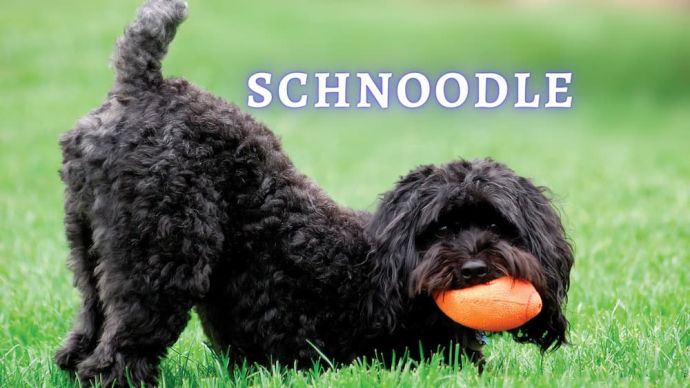 Dog Breeds Schnoodle: Personality, Temperament, and Everything Else You Should Know
Dog Breeds Schnoodle: Personality, Temperament, and Everything Else You Should Know - 1202
- 3
 Dog Breeds Best Emotional Support Dogs: 16 Best Breeds for Emotional Support Dogs
Dog Breeds Best Emotional Support Dogs: 16 Best Breeds for Emotional Support Dogs - 134
- 0
 Dog Veterinary Tips Why is my Dog throwing up: Causes and Preventing (Veterinary Advice)
Dog Veterinary Tips Why is my Dog throwing up: Causes and Preventing (Veterinary Advice) - 23424
- 5
 Dog Care Why Is My Dog Bleeding From Its Butt? Causes and treatment of rectal bleeding in the dog
Dog Care Why Is My Dog Bleeding From Its Butt? Causes and treatment of rectal bleeding in the dog - 22074
- 0
 Dog Care My Dog Keeps Scratching His Mouth: Reasons Why Your Dog Scratching Face
Dog Care My Dog Keeps Scratching His Mouth: Reasons Why Your Dog Scratching Face - 17560
- 1









